Chances are if you know someone named Ting, who speaks in a loud voice, that individual is from Taihsi. Most people in Taiwan surnamed Ting live or hail from Taihsi, descendants of a Ting clan which moved from Ch'ungchow County in Fukien to Taiwan over two hundred years ago. During the Japanese Occupation, a few Huangs, Yaos, and Wangs settled in Taihsi, but today over half of the population still goes by the surname of Ting.
Newcomers to Taihsi are few, and the area retains many distinctive regional characteristics. Residents speak with a thick Ch'unchow accent, which differs markedly from the Taiwanese dialect found elsewhere on the island. Conversation is loud and animated, with frequent jokes and gestures. Locals say this is in part due to the need to shout through the heavy seashore winds which buffet Taihsi six months of the year. "Outsiders see a group of us talking and always think we're having an argument," says Public Housing Director Lin Yu-hou. Lin recalls that when he and other youngsters from Taihsi went to high school in Huwei, they had little of the social graces and were branded as "vulgar" by other classmates.
Taihsi, located in Yunlin County, stands as the westernmost point of Taiwan. This location brings few advantages. Travellers passing through Yunlin must change trains three times before they arrive in Taihsi. Covering 50 square kilometers of sandy, salty land, the area endures a climate of hot temperatures, little rain, and a seasonal wind from the mainland which blows from September to February, filling the air with sand and making rice farming extremely difficult. Many residents as a result turn to fishing and raising sugarcane and peanuts to make ends meet. Others leave Taihsi to find work elsewhere, sending a large part of their earnings home.
"People here as children learn to struggle with the sea, the wind, and the salty soil, which makes for patient, steadfast personalities," comments Taihsi district supervisor Wu Chen-chin. Once away from home, Taihsi natives are noted for their ability to take care of each other. They frequently look into the affairs of others and have a strong sense of justice, which sometimes lands them into trouble.
Many people, hearing that someone is from Taihsi, invariably remark, "You've got a lot of hoodlums and criminals there!" Taihsi natives seeking work in other parts of the country are given a thorough once-over before being hired, and later their colleagues maintain a healthy distance at first.
Such attitudes do not come out of thin air. In the past few years, Taihsi hoodlums have committed several of the island's most spectacular robberies and jailbreaks, one of which later became a book and a movie. The media has also given much play to the Taihsi angle of these incidents. Residents, however, give away nothing regarding their community's reputation. A seventy-eight year old man remarks, "I never heard of them causing any problems whatsoever as children."
Life presents few opportunities for Taihsi youths. In the past the area had only one elementary school. Those wanting to attend high schools had to take bus rides of over two hours to Chiayi or Huwei, and many dropped out to farm or look for work. Add this to the assertive local personality and their propensity to band together, and a life of crime becomes a natural step.
Nevertheless, this environment can also produce model citizens. Ting Kuots'un, an environmental engineer at the State University of New York in the U.S., remembers catching the 5:10 Taiwan Sugar Co. train in the morning to go to the Huwei high school and returning home by the 7:30 train in the evening. Once home, he still had to work and weed in the fields. Struggling and succeeding against this type of adverse situation often produces students with unusual drive and self-confidence.
Religion may also play an important part in forming the local personality. Most seashore inhabitants worship the goddess Matsu, but Taihsi natives go to the Anhsifu temple to pay their respects to Chang Hsun. During the massive An Lu-shan uprising in the 8th century against the Tang dynasty (618-907), Chang Hsun, a general encharged with defending Shuiyang, held the area until his supplies were totally exhausted and his troops dead, leaving the general to die a martyr, cursing the rebels even as his tongue was being cut out. In order to commemorate his heroism, people come in droves to Taihsi before the 10th day of the sixth lunar month, the birthday of Chang Hsun. One hundred thousand pilgrims came last year, requiring the presence of every able-bodied male in the district to keep order and clean up the garbage.
On the birthday of Chang Hsun, every family sets out a table full of offerings for the general and brings it to Anhsifu. There are folk skits and a procession flanked by worshipers welcoming the general's spirit, in an affair complete with firecrackers and incense. Many Taihsi natives, living elsewhere on the island, return home to participate in the festival.
According to legend, over two hundred years ago local fishermen found a bamboo raft bearing on top a small shrine to Chang, with the words "His Excellency General Chang." The fishermen promptly built a small temple nearby. Later, an incarnation of Chang Hsun came looking for an appropriate site for a temple and settled on Anhsifu. A local official inspected the area and felt that the cave there would produce phoenixes, an omen meaning that someone living in the area was destined to become famous. The phoenixes, therefore, must not be allowed to escape, and the official ordered that a stone pillar be placed on the "phoenix's wing." The pillar today is still part of the temple.
Another part of legend concerns the flagstaffs of the temple. The spirit of Chang Hsun incarnated himself as an older man and went to Foochow, where he purchased some fine local timber. He then asked a carpenter to carve his name in the wood. A raft was woven, floated out to sea, and later found by the fishermen. One six-foot long flagstaff, said to be used by Chang Hsun in battle, enjoys a prominent position in front of the temple to protect it against bad luck and misfortune.
Changes are also taking place in the economic life of Taihsi. As seafood becomes a larger part of the average diet in Taiwan, more people in Taihsi are leaving rice farming and turning to raising fish as a livelihood. The local soil is better suited to fish farms and residents find raising shellfish, eel, shrimp, and milkfish to be much more lucrative than rice farming. Raising one hectare of eel in one year, for example, can yield an income of NT$200,000 (US$5,000). Production is exported to Japan and Hong Kong as well as being sold locally, and experts estimate that up to twothirds of the farmland is now devoted to fish farming.
While this new industry produces bigger incomes, it also requires much more work and expertise. Fish farmers must maintain the temperature of their ponds at steady levels, learn how to adapt to changes in the weather, and monitor the water level and its turbidity. All of these variables differ from fish to fish, and sloppiness quickly ruins the "crop." Constant, painstaking labor is involved, which many young farmers do not appreciate when they start in the business.
Four years ago, three brothers in the Taipei construction business found the market in a serious slump and returned to Taihsi. They turned what had been 7 hectares of peanut and sugarcane fields into an eel farm. Each day the brothers rise before dawn, pull on their rubber waders, and go to tend their eels, bringing them up bucket by bucket and later hauling the feed for 7 hectares full of fish. Wading waist-high in foul-smelling ponds is a far cry from the construction business, but no one complains. Says one brother, "If you want to make money, you have to be willing to rough it."
Keeping fish alive in captivity is no easy chore. Huang Nai-wei, who left his office job give years ago to try fish farming, says he tried twenty times before he finally produced a crop. Huang explains, "I'm no expert. The first time the temperature wasn't right, the second time the water wasn't suitable for the fish, the third time they didn't lay eggs. . .by the twentieth time, everything that could go wrong had, and so I succeeded."
Taihsi residents are also enjoying better weather than before. The dusty wind, which in the past reddened eyes and cut into backs like a knife, has been tamed considerably by rows of coast swamp oaks and other trees planted by the county government.
The local government, however, has not stopped at the trees. Twelve years ago they began a massive seashore reclamation project, building a levee and developing an intricate waste control system designed harnessing the power of the sea. Channels were constructed to allow for the ebb and flow of the tides and for fishermen to pass in and out to work. The reclaimed land will be run by the government as a fish farm, to be rented out in parcels to over 500 farmers.
Taishi looks far different from what it did forty years ago. Where the sea once was are now thriving fish farms. Plans are being made to attract tourism, and in the future more people will hear of and come to this special part of Taiwan.
[Picture Caption]
Fish farms are a major source of income in Taihsi. Here egrets forage for food on a farm built on land reclaimed from the sea.
Like a proud and solitary warrior, this lighthouse towers over the flat landscape of Taihsi.
"The boss' word is my command." After this farmer switched from rice to fish farming, his ox found himself hauling oysters instead of pulling a plow.
Fishing boats back from a day on the high seas.
Many of the fish raised in Taihsi are oily eels.
Dredging the field yields an expanse of shiny black clams.
While the rewards are considerable, the work is difficult. Workers wade waist-deep in the muck to catch eel.
After having fed their shrimp, Huang Nai-wei and his father pose on a motor-powered raft.
Taihsi youngsters go hand-in-hand to watch the sunset.
An old Taihsi resident relaxes in the shade.
"Changing faces" is an old set of beauty techniques, still practiced today in Taihsi.
The Anhsifu temple is the center of worship in Taihsi.
So who is in this sedan chair, anyway?
A dip in the pan is better than nothing in the subtropical heat.
Hsu Wen-chih, Yunlin County magistrate, is a Taihsi native.
These trees, planted to block the fierce, sandy seaside winds, have done much to improve the weather in Taihsi.
Construction on the Taihsi land reclamation project.
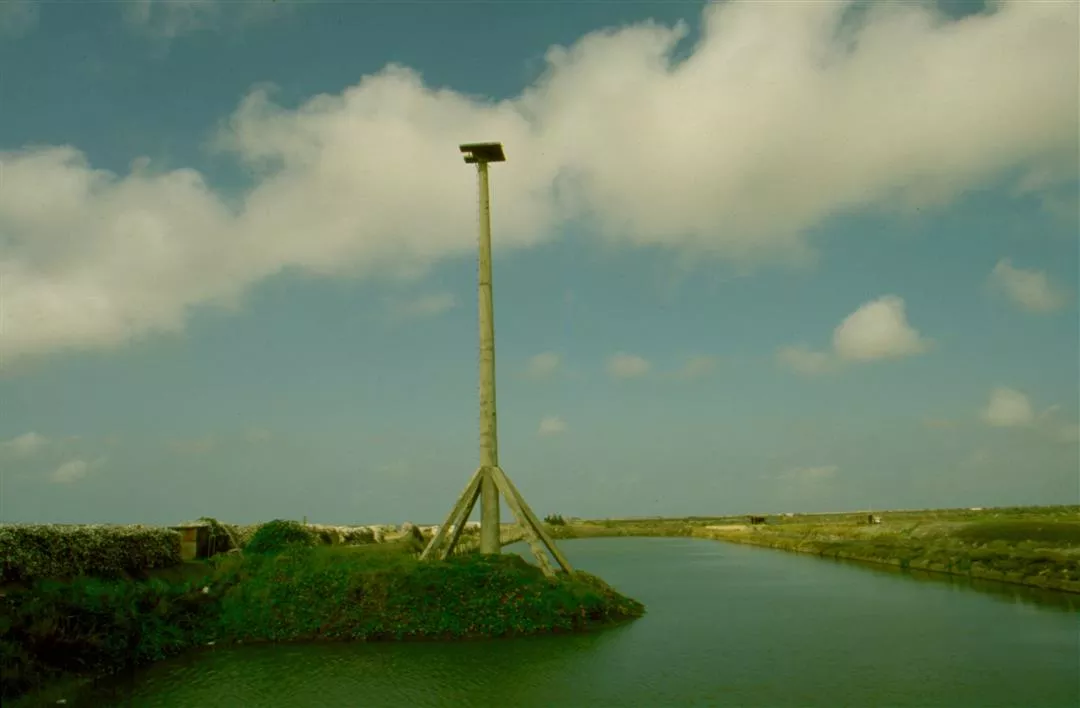
Like a proud and solitary warrior, this lighthouse towers over the flat landscape of Taihsi.
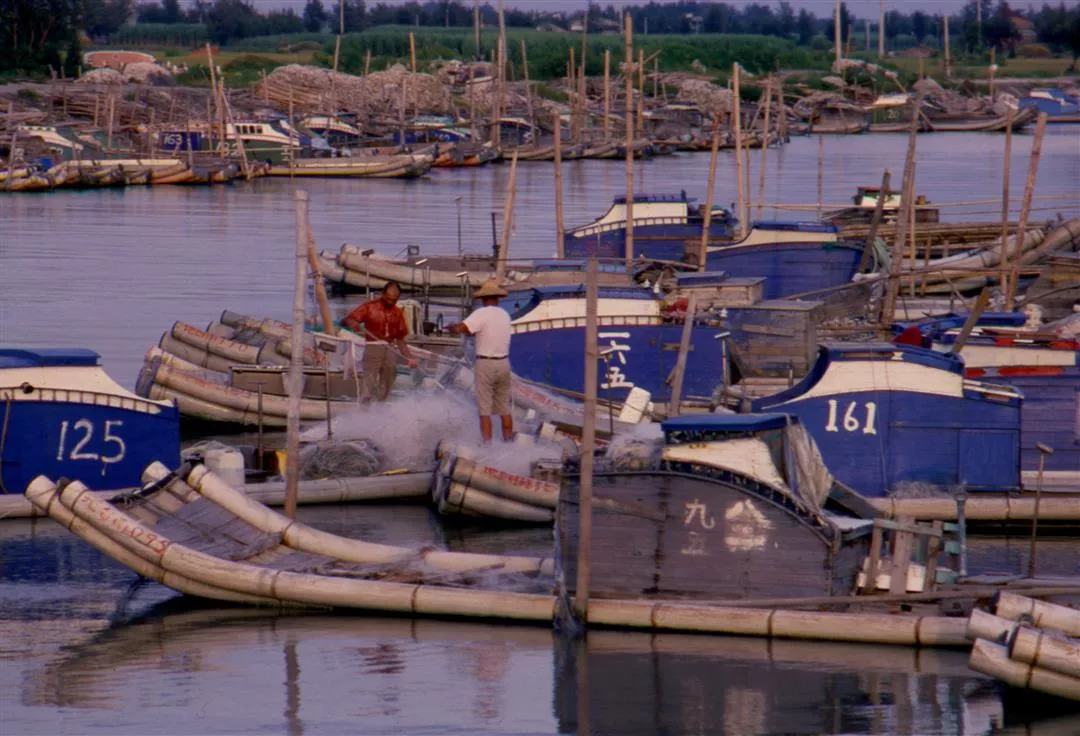
Fishing boats back from a day on the high seas.
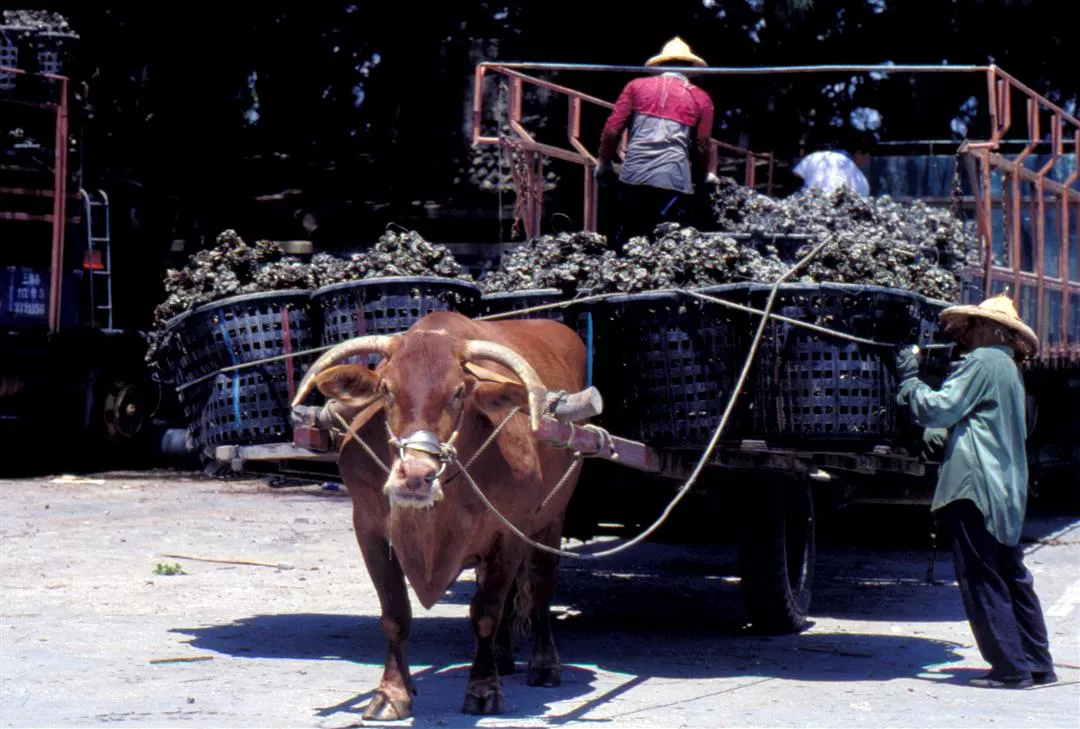
"The boss' word is my command." After this farmer switched from rice to fish farming, his ox found himself hauling oysters instead of pulling a plow.
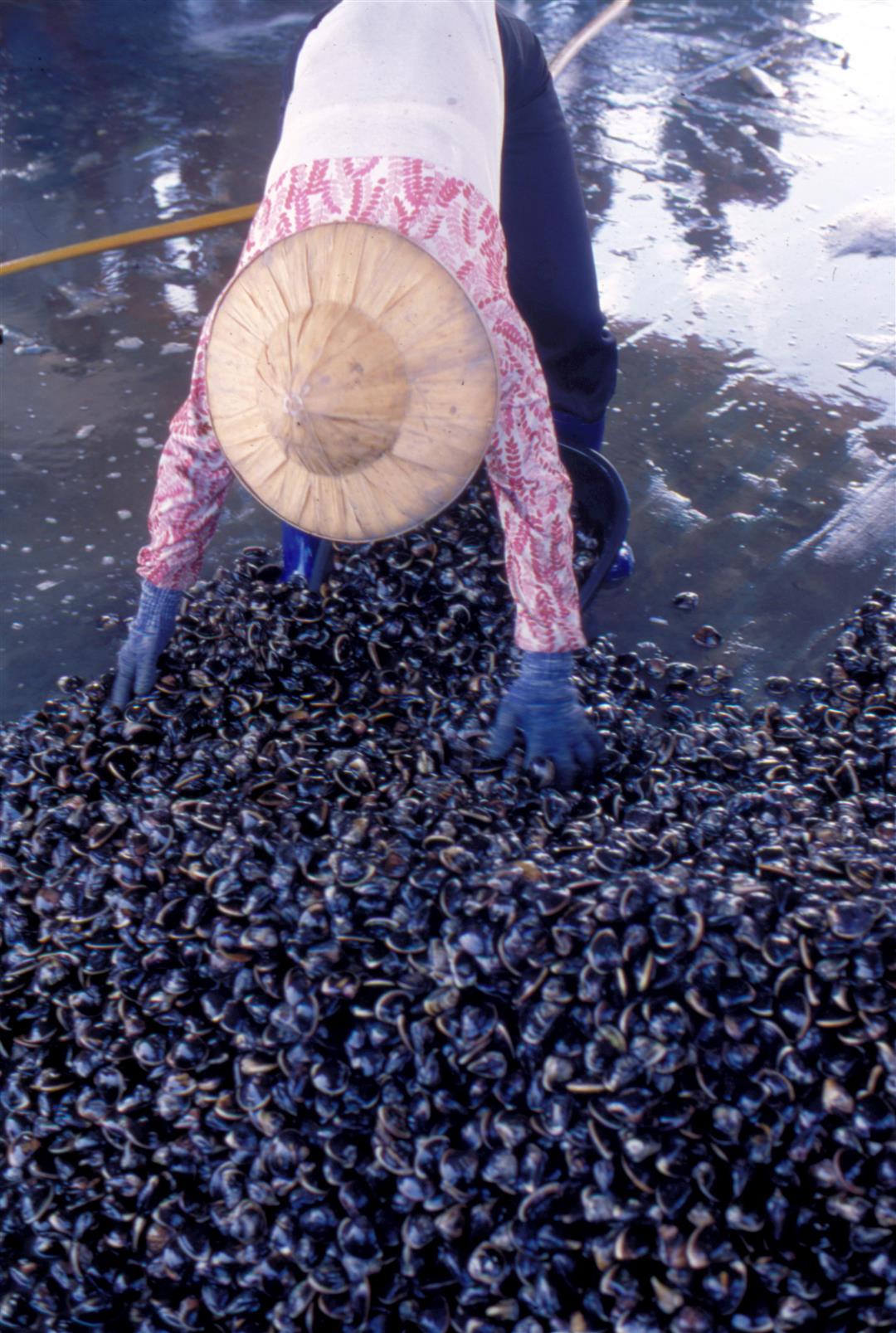
Dredging the field yields an expanse of shiny black clams.
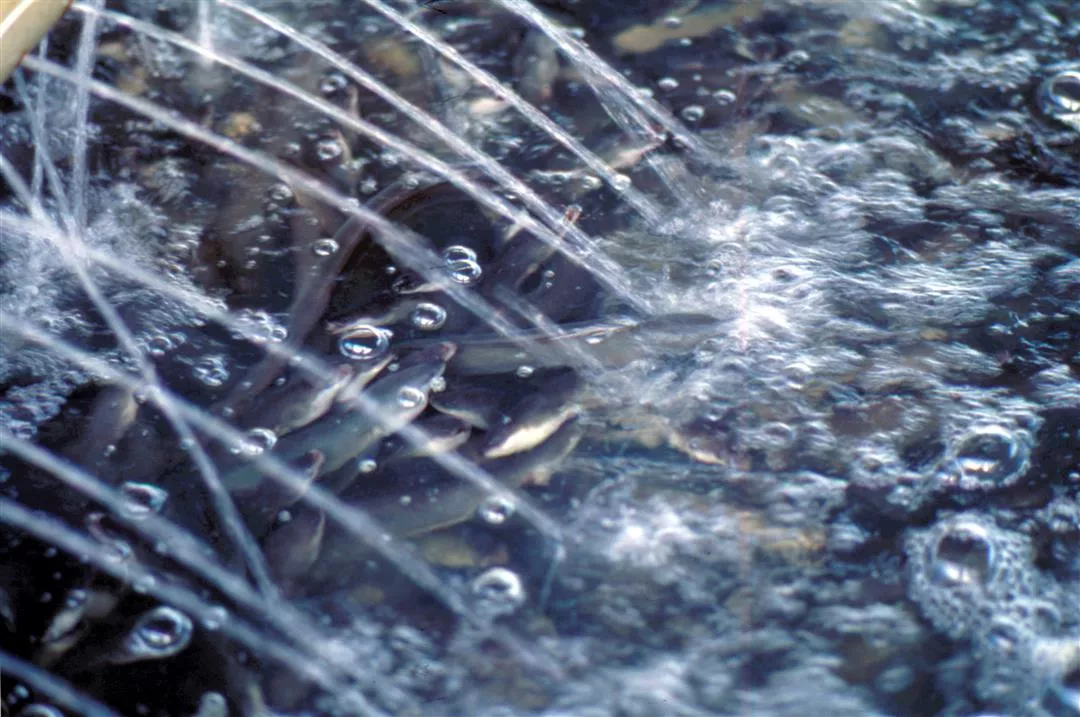
Many of the fish raised in Taihsi are oily eels.
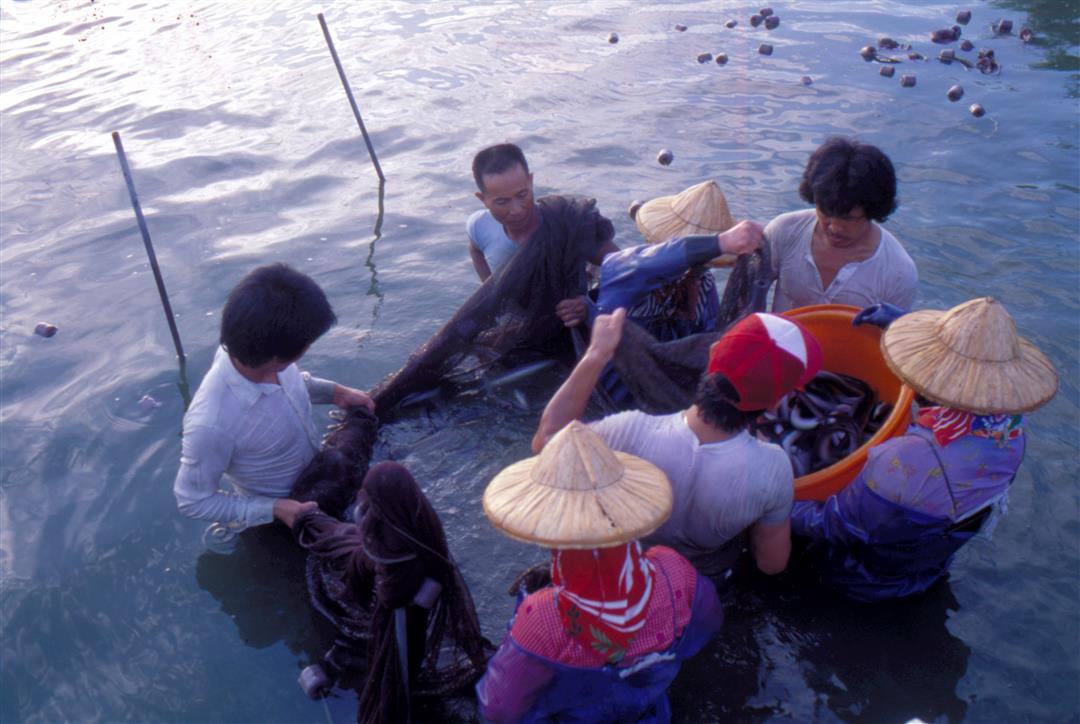
While the rewards are considerable, the work is difficult. Workers wade waist-deep in the muck to catch eel.
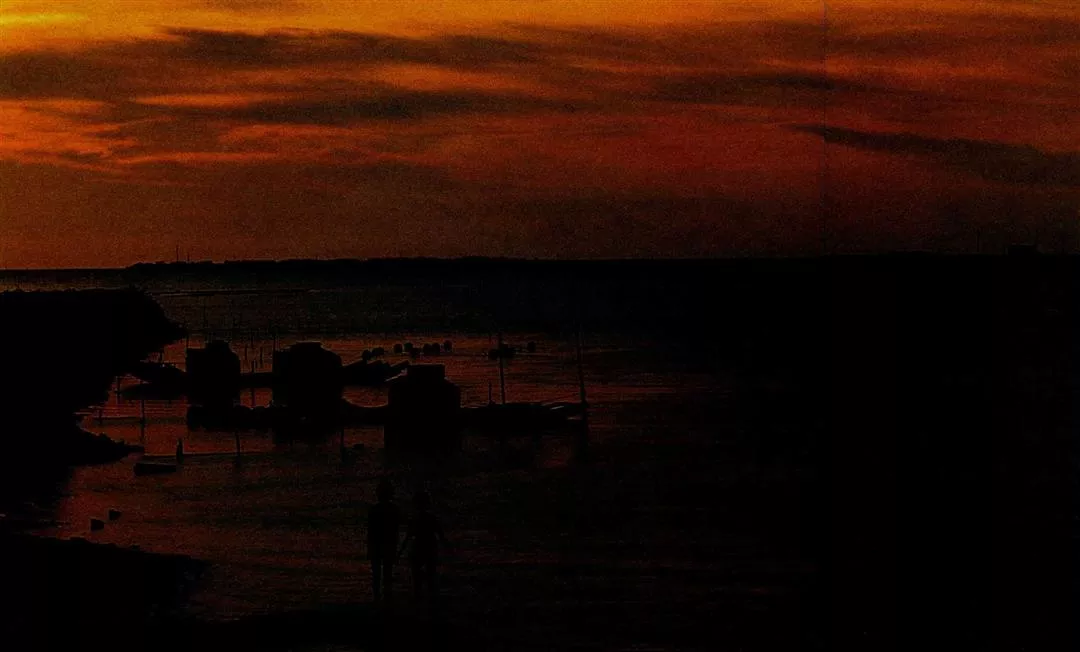
Taihsi youngsters go hand-in-hand to watch the sunset.
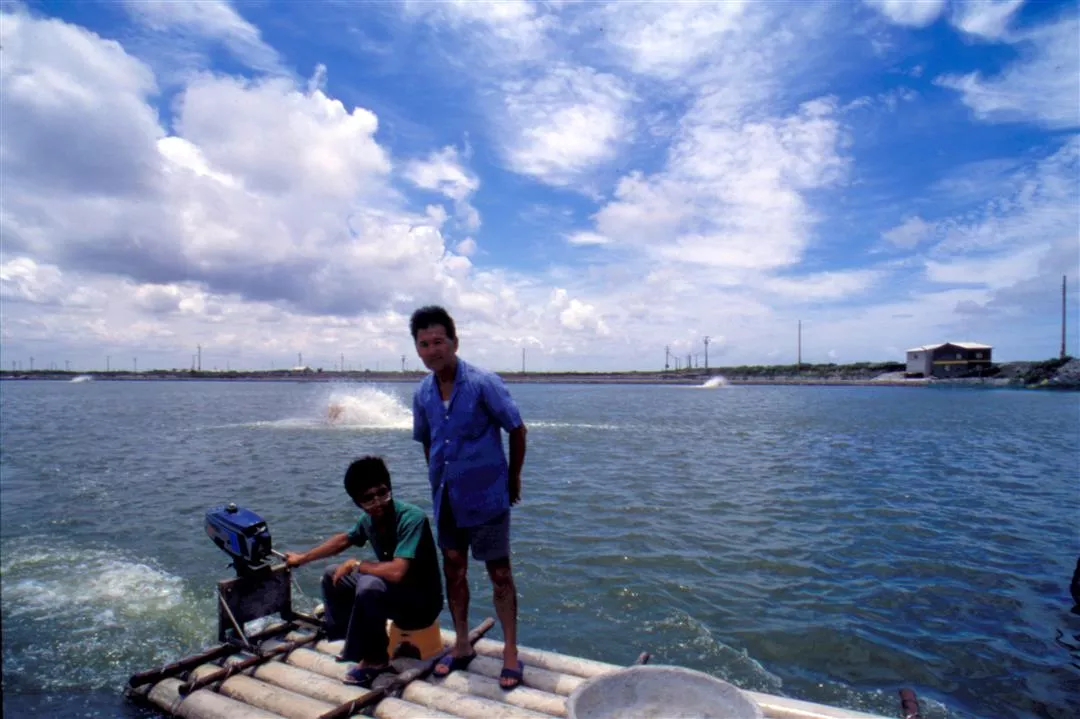
After having fed their shrimp, Huang Nai-wei and his father pose on a motor-powered raft.
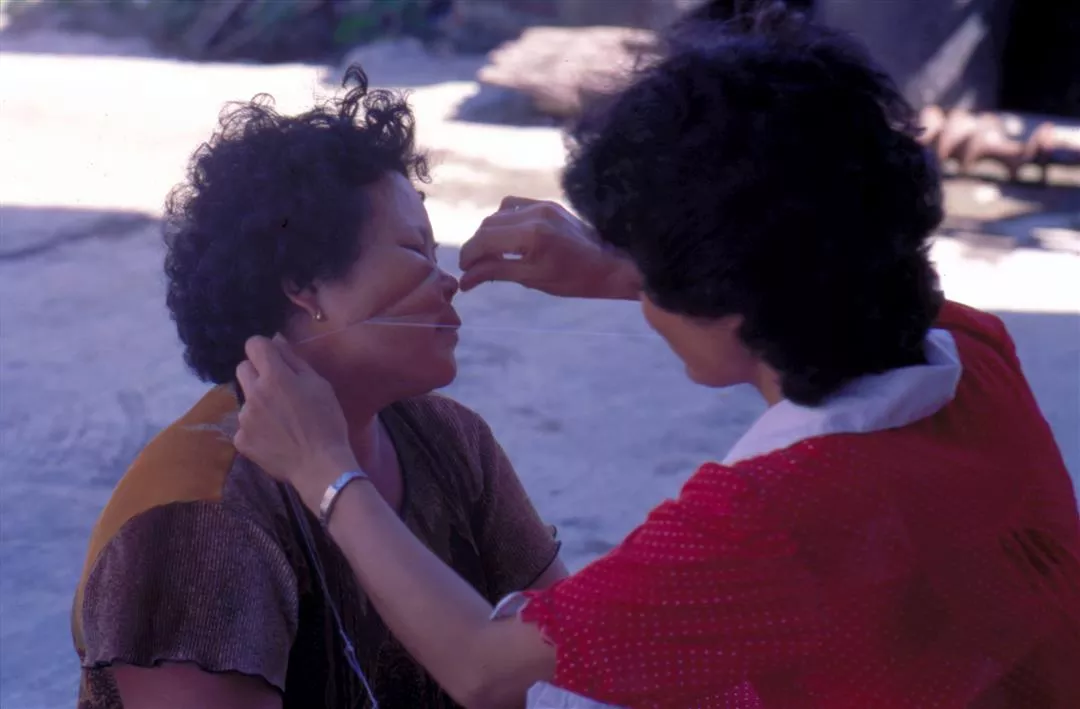
"Changing faces" is an old set of beauty techniques, still practiced today in Taihsi.
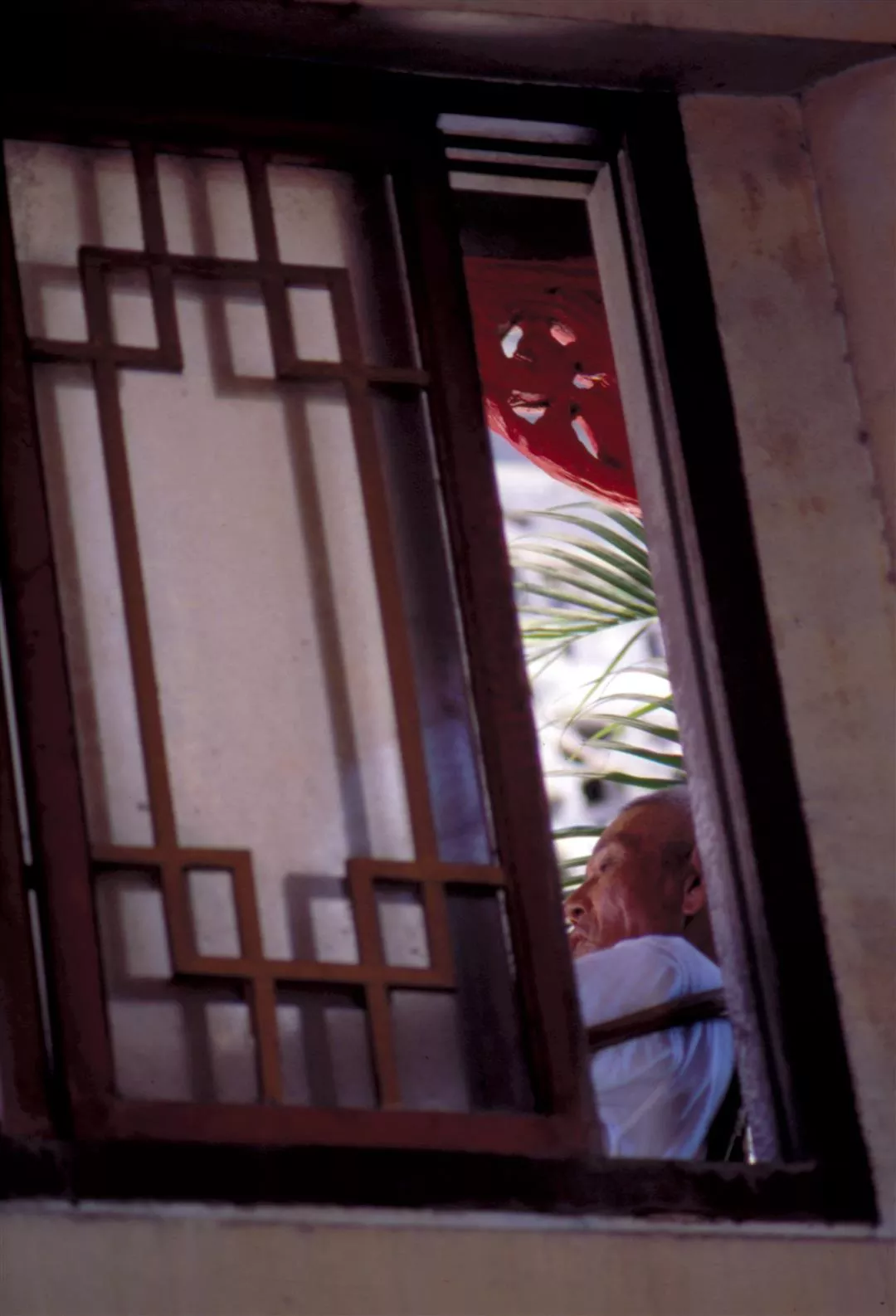
An old Taihsi resident relaxes in the shade.
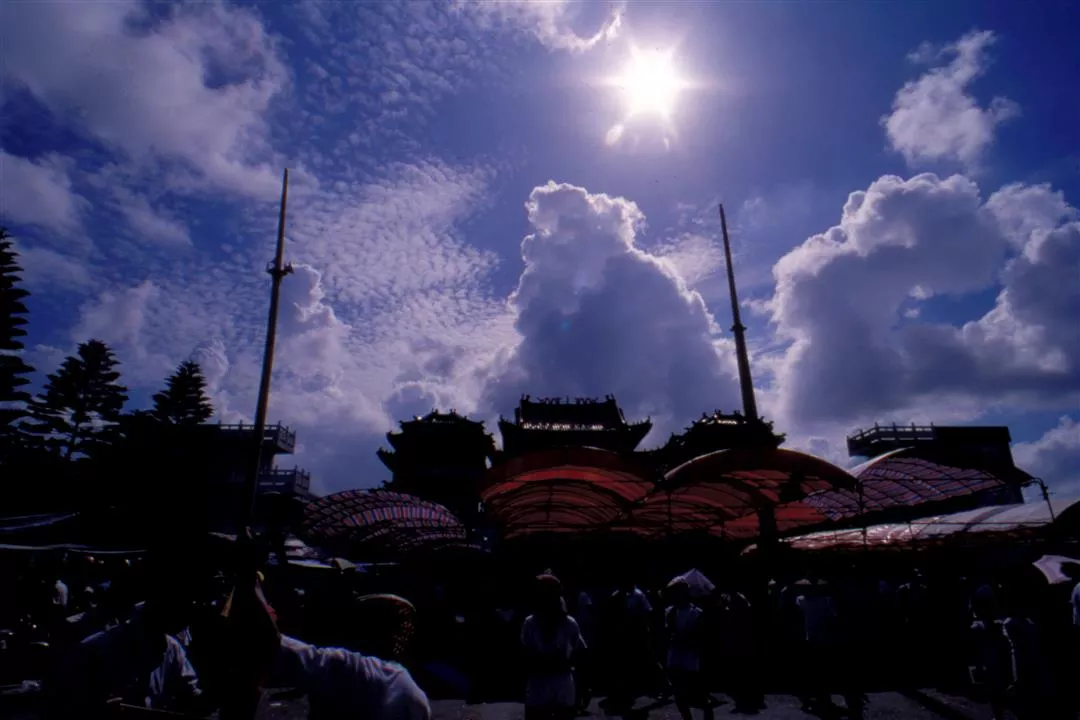
The Anhsifu temple is the center of worship in Taihsi.
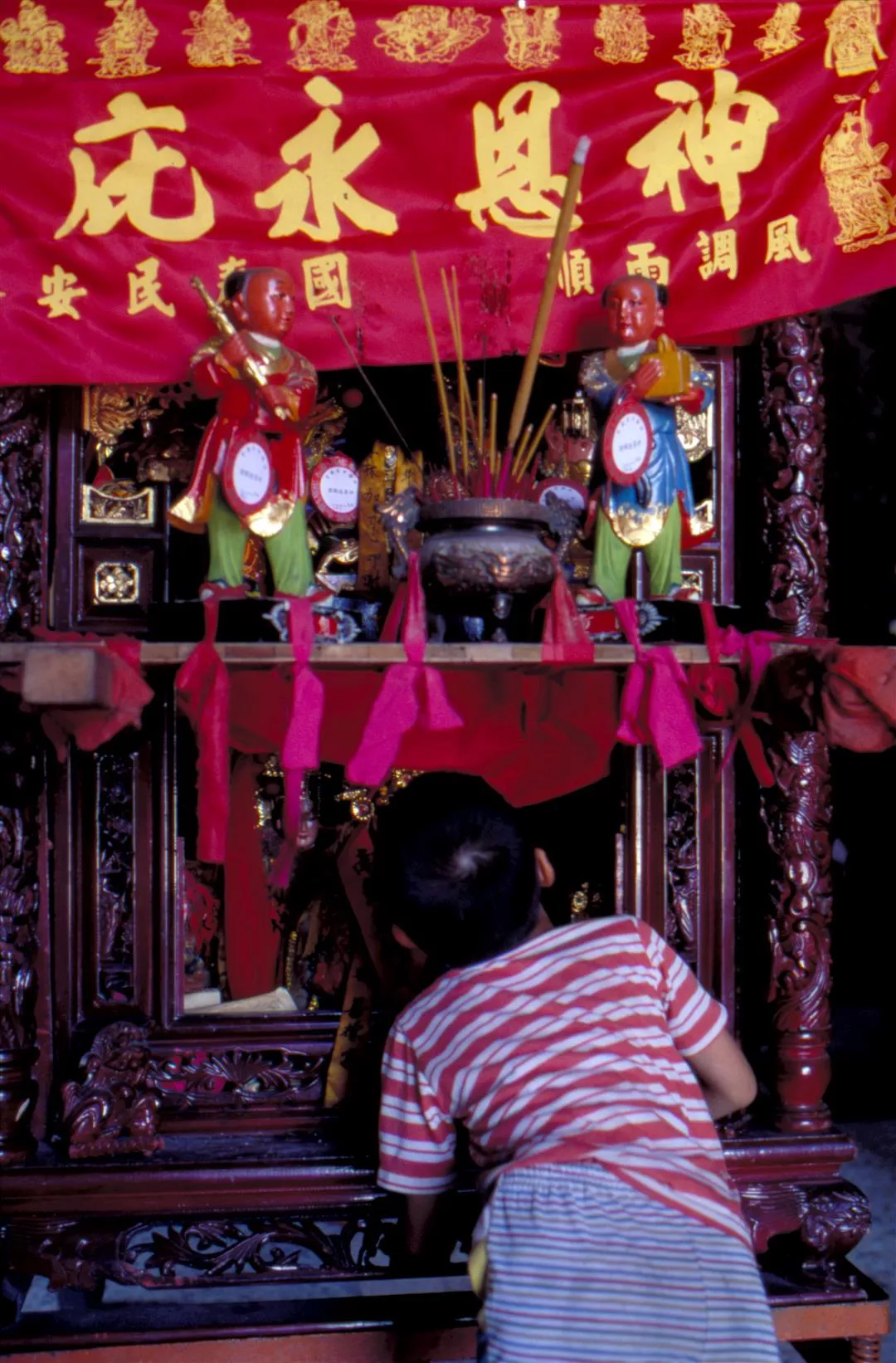
So who is in this sedan chair, anyway?
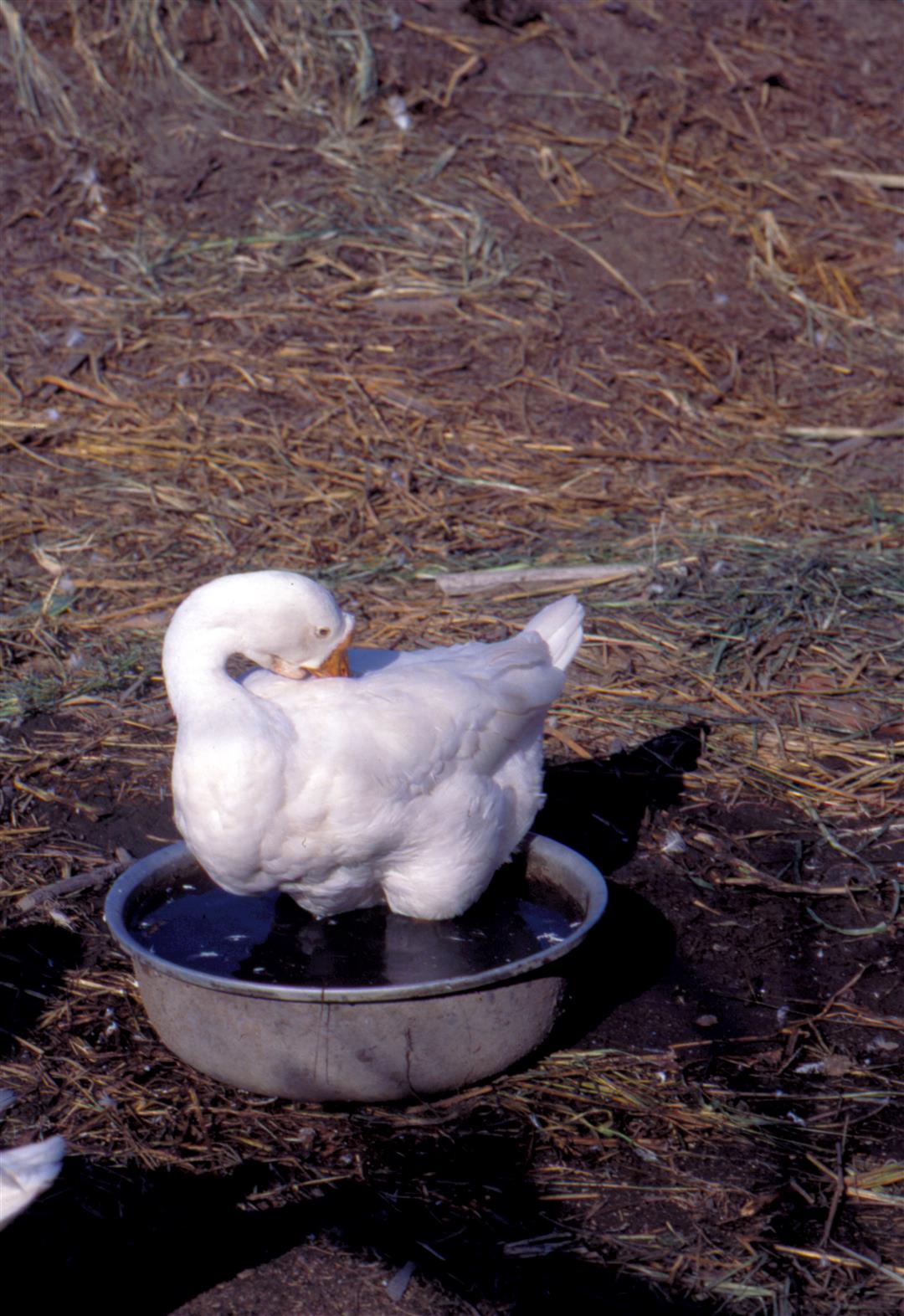
A dip in the pan is better than nothing in the subtropical heat.
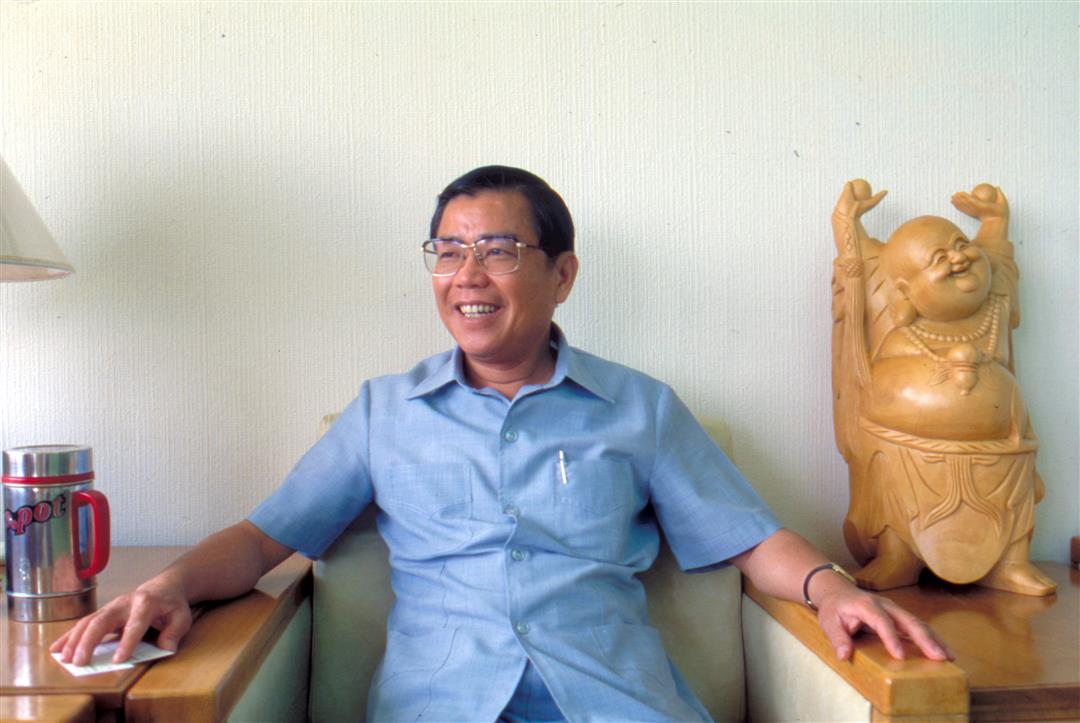
Hsu Wen-chih, Yunlin County magistrate, is a Taihsi native.
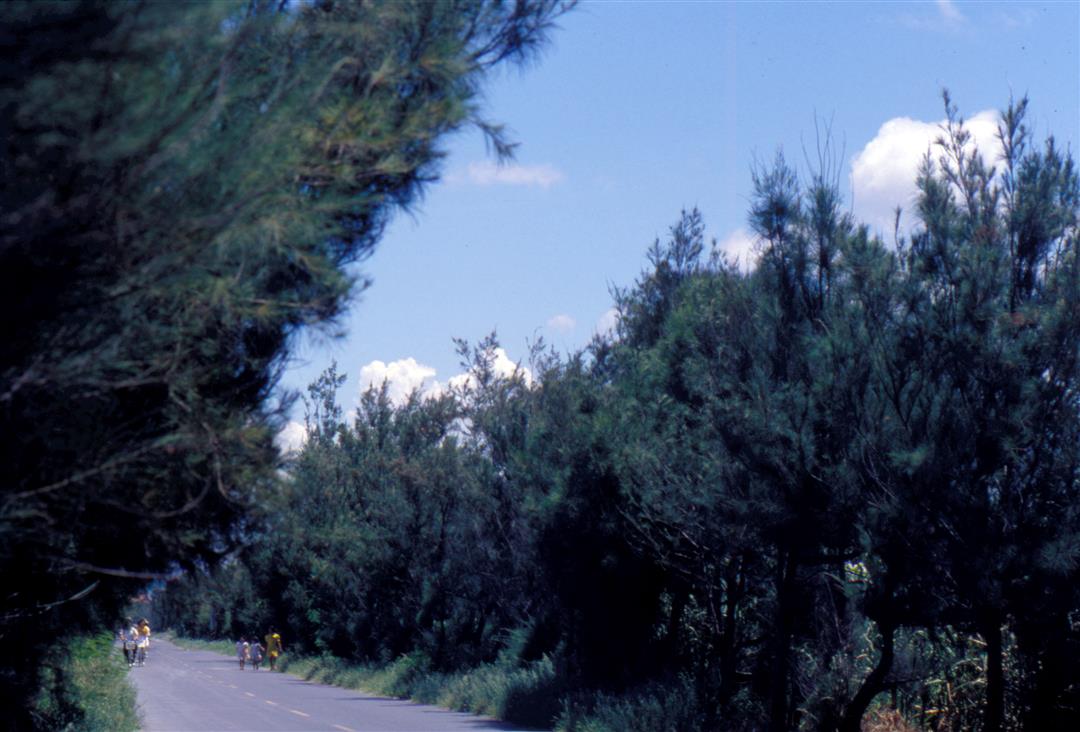
These trees, planted to block the fierce, sandy seaside winds, have done much to improve the weather in Taihsi.
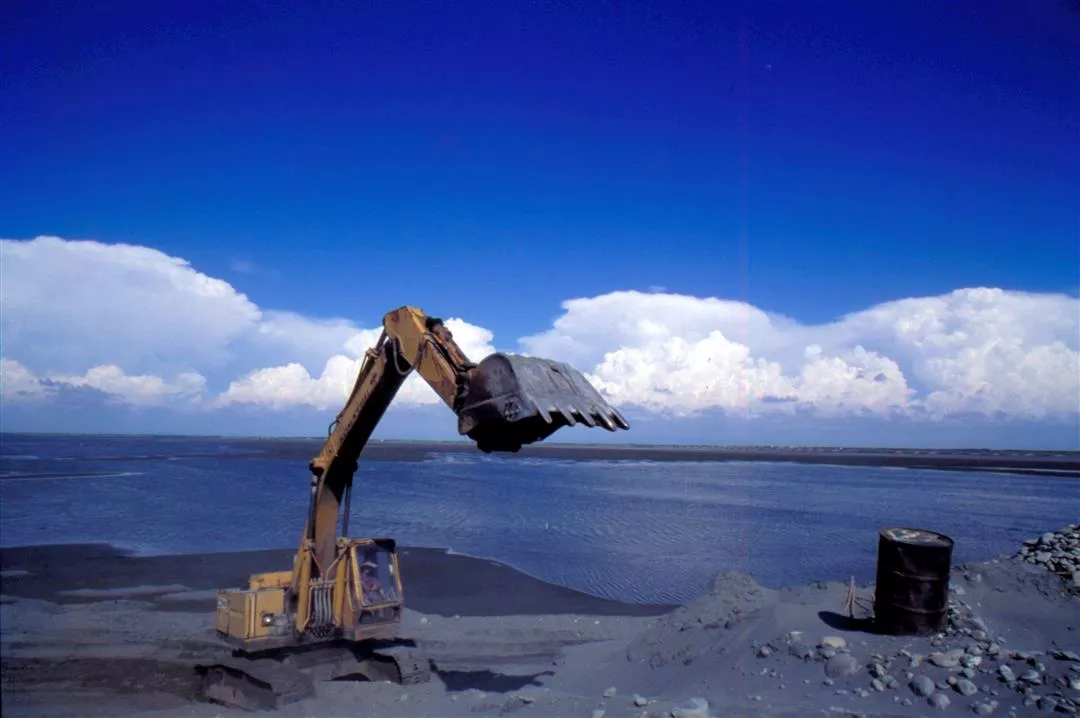
Construction on the Taihsi land reclamation project.